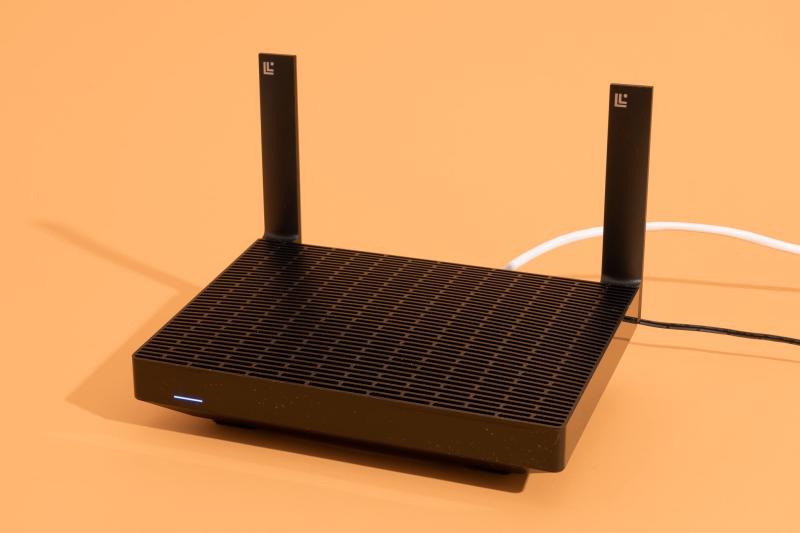Routers and switches are essential networking system components but serve different functions. A switch directs network traffic between devices within a single network or subnet. For instance, if your computer sends data to a printer on the same network, a switch would transport the data directly to the printer without involving other devices. MAC addresses determine the delivery of data packets at Layer 2 (Data Link Layer) of the OSI model, where switches operate.
A router, on the other hand, directs data transmissions between networks and subnets. When you access a website, your data travels across multiple networks, and routers direct it along the most efficient path. At Layer 3 (Network Layer) of the OSI model, where communications are forwarded based on IP addresses, routers operate.
Switches function within networks by transporting data between devices based on their MAC addresses. Using IP addresses, routers direct data packets to their respective destination networks. Switches establish a network of devices, while routers link these networks to the Internet. Each plays a crucial role in managing network traffic, ensuring data reaches its intended destination quickly and accurately.
What is Router?
A router is a networking device that helps move data bits between networks. It acts as a central hub. Its main job is to enable data transfer from one network to another. This could be from your home network to the Internet or from one network in a business to another.
Routers work at Layer 3 of the Open Systems Interconnection (OSI) model, the Network Layer. They use standards like Internet Protocol (IP) to determine the best route for data packets to get where they need to go. A routing table lists known networks a router uses to decide where to send packets. Using routing protocols, it can learn and change as the network changes, changing its table to ensure that data always takes the best route.
Routers often have built-in security features, like firewalls or Virtual Private Network (VPN) support, to protect the networks they are in charge of. Some routers also have a built-in switch, which lets you connect multiple devices directly to the router. A router is crucial because it connects different networks, directs internet traffic, and protects network security. This makes it possible to communicate quickly and safely over the Internet.
What is Switch?
A switch is a crucial networking device that connects several devices on a Local Area Network (LAN), making it easier for them to communicate. Unlike a hub, which sends any data into all of its ports, a switch sends data only to the device it is meant for. This improves the speed and protection of the network.
Switches work at the Open Systems Interconnection (OSI) model’s Data Link Layer (Layer 2), but some more powerful switches also work at the Network Layer (Layer 3). Standard Layer 2 switches forward data packets using MAC (Media Access Control) addresses, while Layer 3 switches can also use IP (Internet Protocol) addresses to route communication. The switch is connected to devices like computers, printers, and servers in a normal home or office. The switch then connects all of these devices into a network so that they can share info. Multiple switches can be linked together in big networks.
You can “unmanage” or “manage” a switch. Unmanaged switches are plug-and-play devices that can’t be changed. They are suitable for small networks because they can’t be changed. With features like VLANs, Quality of Service (QoS), and SNMP monitoring, managed switches give you more power. This makes them a better choice for more extensive, more complex networks. In short, switches are essential for making fast, secure, and easy-to-handle networks because they make it easy for devices to talk to each other.
Difference Between Router and Switch
Within its network, a switch uses MAC addresses to control which devices can communicate with one another. The OSI reference model operates at Layer 2, the Data Link Layer. However, a router can function between different networks and subnets, directing data packets according to their IP addresses. It operates on Layer 3 of the OSI model, which is the Network Layer. Routers connect local networks to the Internet or one another, while switches are responsible for first connecting the devices in the network. As a result, switches are concerned primarily with intranet communications, while routers handle internet connections. Below, we’ve outlined the key differences between a router and a switch.
Layer of Operation
Switches primarily function at the OSI model’s Data Link Layer (Layer 2), whereas routers operate at the higher Network Layer (Layer 3). Layer 3 operation is possible on some high-end switches.
Data Routing Mechanism
Routers send Data packets in a specific direction based on their IP addresses. Data frames are routed through switches based on their MAC addresses.
Network Communication
While routers are used to direct traffic across networks, switches are used to manage traffic within a single network.
Table Used
Routers employ routing tables when directing data, whereas switches rely on MAC address tables.
Broadcast Handling
By not forwarding broadcasts, routers keep them within the local area network. In contrast, switches forward broadcast communication to every node in the network bar the source.
Hardware/Software Decisions
To analyze data more quickly, switches use ASIC silicon processors instead of routers for making routing decisions.
Security Features
Routers generally support advanced security protocols like VPNs, NATs, and firewalls. In their place, switches offer VLAN and port security for minimal protection.
Connectivity
Routers bridge the gap between disparate networks (such as your home network and the web). In a network, devices (such as a computer and a printer) are linked by a switch.






